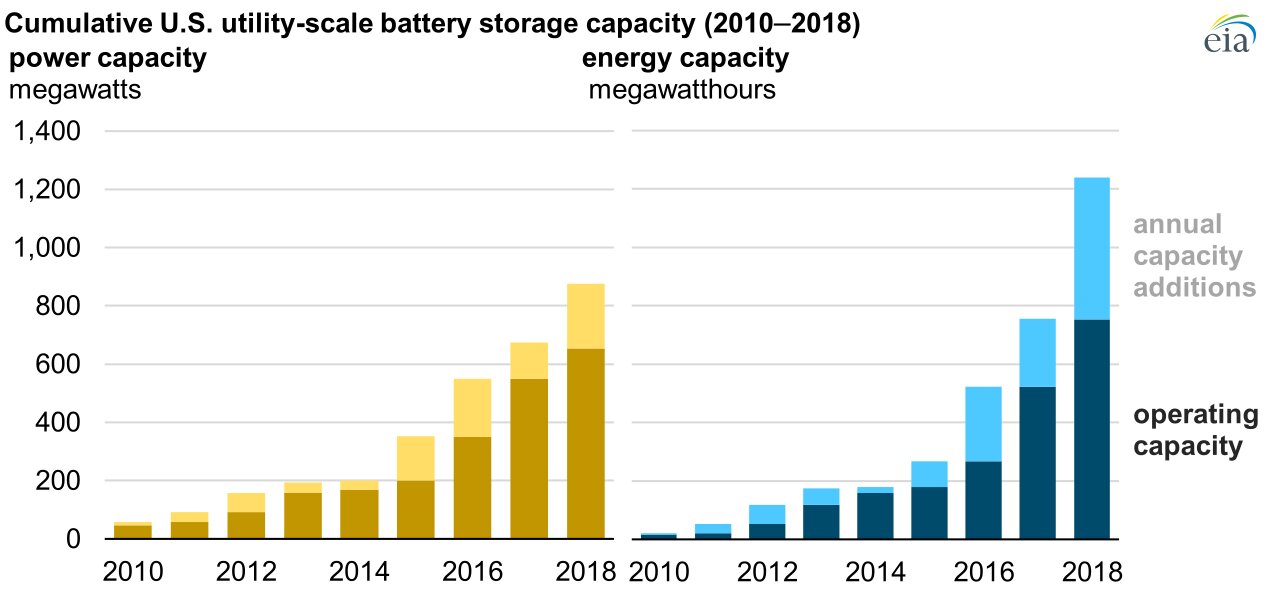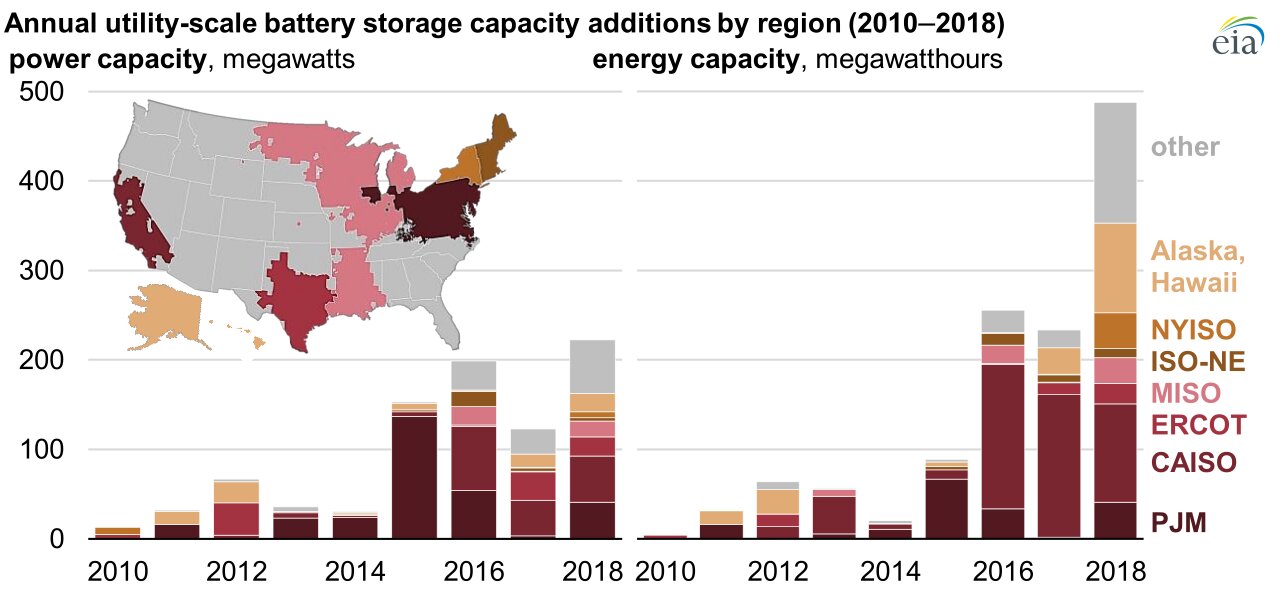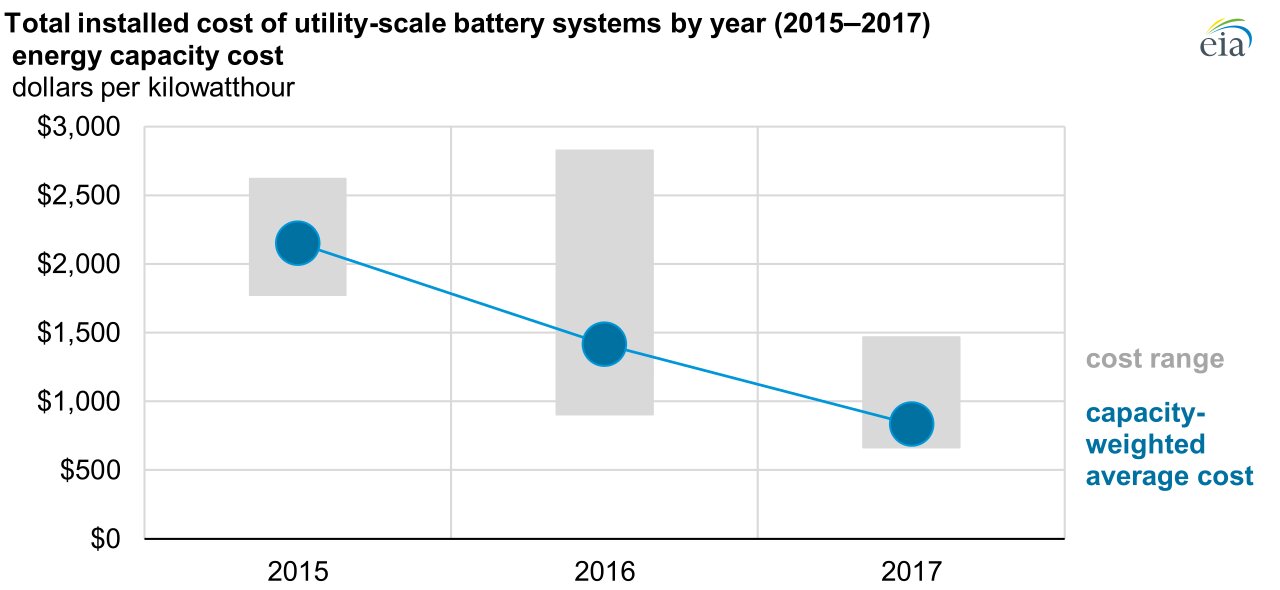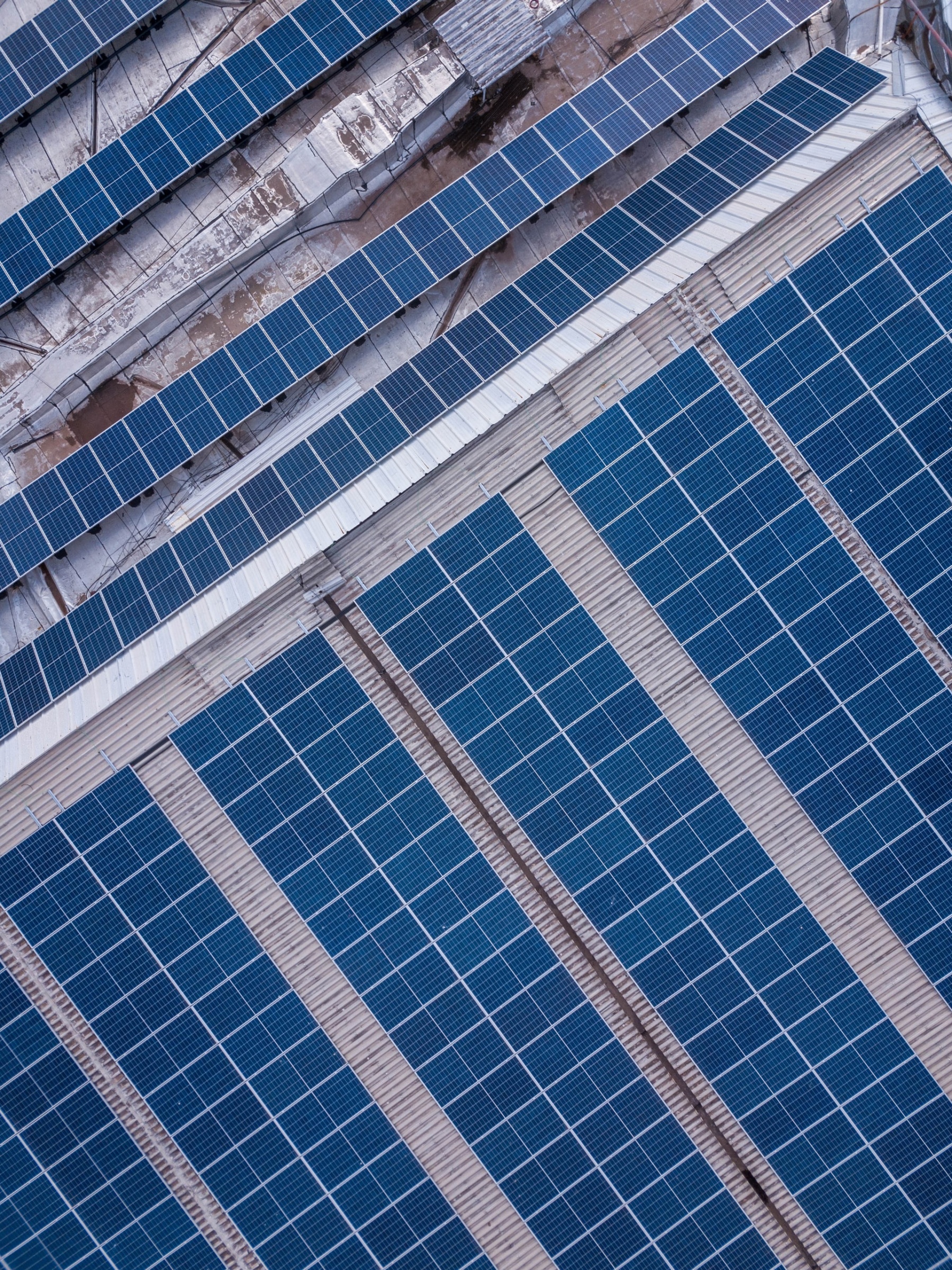Utility-scale battery storage capacity is continuing to surge across the United States. Recent reporting from the U.S. Energy Information Administration (EIA) shows the exponential growth of utility-scale battery storage from 2010 through to 2018, with particularly notable growth in more recent years.
Between 2010 and 2018, utility-scale battery storage capacity has seen quite staggering growth, and this trend looks set to continue as energy storage becomes a more significant element of the energy sector. The figures below highlight just how significant this growth has been in the eight-year period from 2010 to 2018.
- U.S. Utility-Scale Battery Storage in 2010:
- 7 operational battery storage systems
- 59 MW of power capacity
- 21 MWh of energy capacity
- U.S. Utility-Scale Battery Storage in 2018:
- 125 operational battery storage systems
- 869 MW of power capacity
- 1,236 MWh of energy capacity
To further illustrate the development of utility-scale battery storage capacity, the EIA has put together the chart below, detailing growth figures for all years from 2010 to 2018.
By pulling and storing electricity from generators, or even directly from the grid, battery storage systems can then redistribute this power at a later point—whenever it’s required. Some of the most popular applications of battery storage systems include:
- Integration of renewables into the energy grid
- Peak shaving
- Frequency regulation
- Provision of backup power
Regions covered by regional transmission organizations (RTOs) and independent system operators (ISOs) generally see the most capacity installed, with most battery systems being located in the PJM Interconnection (PJM) and the California Independent System Operator (CAISO). While PJM and CAISO did account for 55% of battery storage power capacity built from 2010 to 2018, more than 58% (130 MW) of new power capacity/69% (337 MWh) of new energy capacity was installed outside the PJM/CAISO states in 2018.
The following chart, again courtesy of the EIA, shows how this distribution of new utility-scale battery storage systems has varied over the years. 
The declining costs of utility-scale battery storage systems are responsible, at least partially, for their huge growth. As battery storage becomes more affordable, its capacity growth surges, and the integration of energy storage systems alongside renewables like solar and wind becomes more viable for developers.
According to the EIA, the average costs per unit of energy capacity decreased by a massive 61% between 2015 and 2017. This percentage represents a decrease from $2,153 per (kWh) to $834 per kWh. The graphic below, again from the EIA, shows the declining costs associated with utility-scale battery storage systems from 2015 to 2017.
If you’d like to read more about battery storage, check out the U.S. Energy Information Administration’s report, Battery Storage in the United States: An Update on Market Trends.
If you’re interested in battery storage for your home or business, get in touch with YSG Solar today. We will identify a renewable energy solution to suit your needs, including both solar panels and energy storage. Send us an email, or call at 212.389.9215 to get started.
YSG Solar is a project development vehicle responsible for commoditizing energy infrastructure projects. We work with long-term owners and operators to provide clean energy assets with stable, predictable cash flows. YSG's market focus is distributed generation and utility-scale projects located within North America.
Sources:

